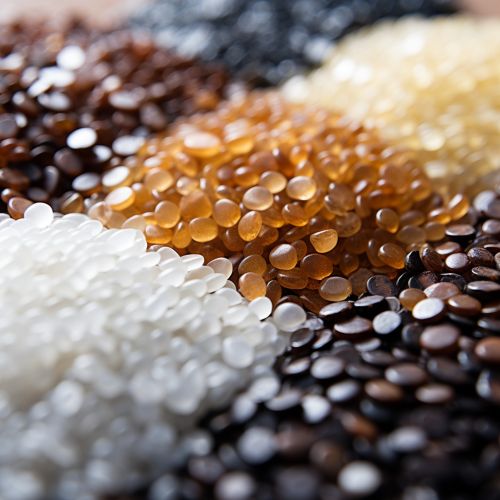The Physics of Granular Materials and Jamming
Introduction
Granular materials are collections of discrete macroscopic particles, such as sand, sugar, or snow, that have properties of both solids and fluids. The study of granular materials is a rich field that intersects disciplines such as physics, engineering, and geology. The behavior of granular materials under various conditions, including the phenomenon of jamming, is a topic of ongoing research.


Properties of Granular Materials
Granular materials exhibit unique properties that set them apart from other forms of matter. These properties include, but are not limited to, the ability to support shear stress in a static state, the lack of a unique equation of state, and the ability to transition between solid-like and fluid-like states.
Shear Stress
In a static state, granular materials can support shear stress, a property typically associated with solids. This is due to the frictional forces between the grains. When a granular material is subjected to shear stress, the grains rearrange themselves into a more stable configuration, allowing the material to resist deformation.
Lack of a Unique Equation of State
Unlike gases, liquids, and solids, granular materials do not have a unique equation of state. This is because the behavior of granular materials depends not only on their density and temperature, but also on their history. For example, the same granular material can exhibit different behaviors depending on whether it was previously compressed or sheared.
Transition Between Solid-Like and Fluid-Like States
Granular materials can transition between solid-like and fluid-like states. This transition is governed by the granular material's packing fraction, which is the fraction of the total volume occupied by the grains. When the packing fraction is below a certain threshold, the granular material behaves like a fluid. When the packing fraction is above this threshold, the granular material behaves like a solid.
Jamming in Granular Materials
Jamming is a phenomenon that occurs in granular materials when they transition from a fluid-like state to a solid-like state. This transition can be triggered by increasing the packing fraction, applying shear stress, or decreasing the temperature.
Jamming by Packing Fraction
When the packing fraction of a granular material is increased beyond a certain threshold, the material undergoes a jamming transition and becomes a solid. This threshold, known as the jamming point, depends on the shape and frictional properties of the grains.
Jamming by Shear Stress
Applying shear stress to a granular material can also trigger a jamming transition. This is because shear stress causes the grains to rearrange themselves into a more stable configuration, which can lead to jamming.
Jamming by Temperature
Decreasing the temperature of a granular material can also trigger a jamming transition. This is because lower temperatures reduce the thermal motion of the grains, making it harder for them to rearrange themselves and avoid jamming.
Applications of Granular Material and Jamming Physics
The study of granular materials and jamming has numerous applications in various fields. These include, but are not limited to, the design of efficient packing and transport systems, the prediction of avalanches and landslides, and the development of new materials with tunable mechanical properties.
Packing and Transport Systems
Understanding the physics of granular materials can help in the design of efficient packing and transport systems. For example, knowledge of how granular materials jam can be used to prevent blockages in hoppers and silos.
Prediction of Avalanches and Landslides
The study of granular materials can also aid in the prediction of avalanches and landslides. By understanding how granular materials behave under different conditions, it is possible to predict when and where these natural disasters might occur.
Development of New Materials
Research into granular materials and jamming can also lead to the development of new materials with tunable mechanical properties. For example, by controlling the packing fraction of a granular material, it is possible to create a material that can switch between being soft and hard.
